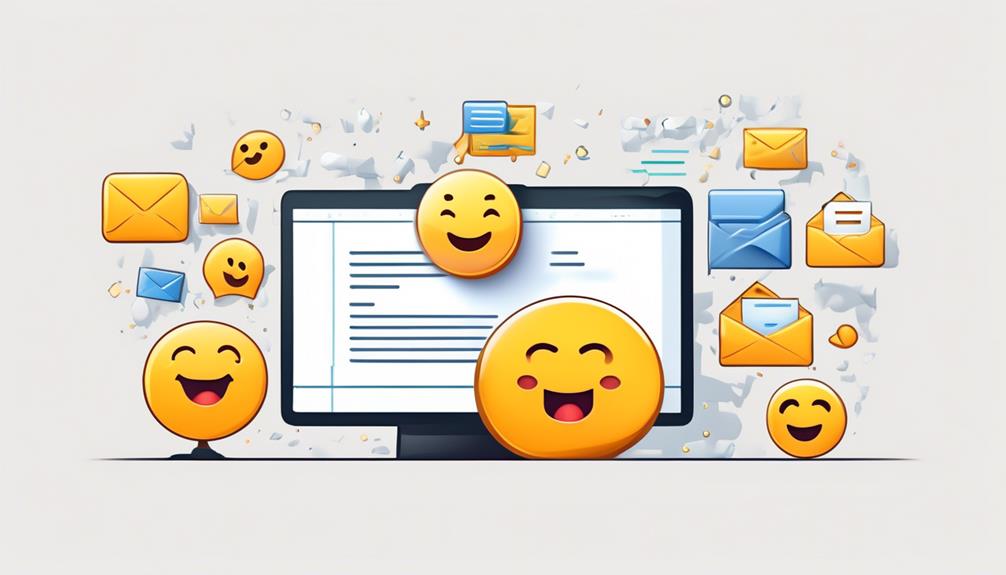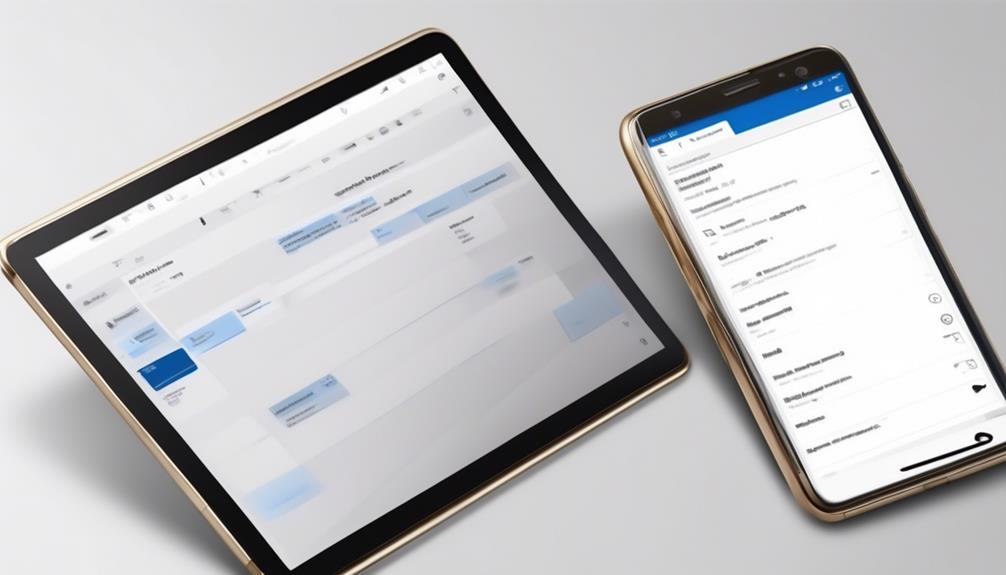Hello! We’ve all experienced it – gazing at an empty screen, attempting to write an informal email that perfectly navigates the line between being approachable and maintaining professionalism.
But fear not, because I've got some solid tips and tricks to help you nail that casual email tone without breaking a sweat.
So, let's dive into the dos and don'ts of crafting a laid-back yet effective email that will make your recipients feel at ease and engaged from the get-go.
Key Takeaways
- Adopt a conversational and friendly tone
- Embrace informal language and expressions
- Keep the email concise and warm
- Use emojis sparingly to convey tone and emotion
Understanding Casual Email Tone
How can we effectively convey a relaxed and informal tone in casual emails?
When writing casual emails, it's crucial to adopt a conversational and friendly tone. Using informal greetings like 'Hey' or 'Hi there' can immediately set the tone for a relaxed exchange. Embracing informal language and expressions, including contractions and internet slang, can further enhance the friendly and approachable vibe.
It's important to keep the email concise and warm, creating a sense of connection with the recipient. Additionally, incorporating emojis or emoticons can add a touch of informality and help convey emotions effectively. Adhering to proper grammar while maintaining a casual tone is also essential in casual email writing. Understanding the balance between informality and professionalism is key to mastering the art of casual email communication.
Elements of a Casual Email

Creating a casual email requires adopting a conversational and friendly tone to effectively engage with the recipient. When writing a casual email, it's important to use informal language and incorporate elements that make the email feel more like a conversation with a friend or family member. Here are the key elements to include in a casual email:
| Element | Description |
|---|---|
| Conversational Tone | Use a relaxed and friendly language, similar to how you would speak in person. |
| Personal Greetings | Start with a casual greeting like 'Hey' or 'Hi [Name]' to create a friendly atmosphere. |
| Informal Language | Feel free to include slang, contractions, and casual expressions to connect with the recipient. |
| Brief and to the Point | Keep the email concise and direct, focusing on the main points without formalities. |
| Casual Sign-off | End with a laid-back closing such as 'Take care,' 'Cheers,' or 'Talk soon.' |
Incorporating these elements will help create a friendly email that is more akin to the way we communicate on social media or in casual conversations. By using a conversational tone, informal language, and personal greetings, the email will feel more friendly and engaging.
Tips for Writing a Casual Email
When writing a casual email, it's essential to maintain a conversational and friendly tone while avoiding overly formal language. One of the key tips for writing an informal email is to consider the recipient's familiarity and relationship with you.
Tailoring the level of formality to the individual can help strike the right balance between being too casual and overly formal. Friendly emails often incorporate slang or informal language to set the tone, but it's important to use these elements judiciously.
Another important tip is to make the email personal and engaging. Sharing anecdotes, experiences, or updates in a casual manner can make the email more relatable and enjoyable to read.
Additionally, including contact information or a casual sign-off can create a sense of approachability. Emojis can also be used sparingly to convey tone and emotion in an informal setting.
Common Mistakes in Casual Emails

In casual emails, it's important to be mindful of common mistakes such as overusing abbreviations or text speak. While these can be acceptable in more informal correspondence, they can come across as unprofessional when writing a formal email to a business contact.
Additionally, neglecting to check for typos and grammatical errors can detract from the professionalism and credibility of your message. It's important to ensure that the content of your email is well-written and error-free to convey a polished image.
Another common mistake is failing to consider the recipient's relationship and level of formality. For instance, if you've recently moved from a more informal to a more formal relationship with a business contact, your communication style might need to be adjusted accordingly.
Lastly, including sensitive or personal information without consent can be inappropriate and may lead to misunderstandings or discomfort. When crafting the body of your email, always consider the recipient's perspective and the context of your relationship.
Real-life Casual Email Examples
Real-life casual email examples can provide valuable insights into crafting informal correspondence with a friendly and approachable tone. When writing informal emails, it's a good idea to think about how you'd communicate with a friend.
Here are some real-life casual email examples that might even be better than templates:
- Personal Anecdotes: Including a brief personal anecdote or a shared experience can make the email feel more friendly and relatable.
- Emojis and GIFs: Using emojis sparingly and appropriate GIFs can add a touch of lightheartedness to the email, but it's important not to overdo it.
- Unique Sign-offs: Concluding with a unique and personalized sign-off, such as 'Take care' or 'Looking forward to hearing from you,' can leave a lasting impression.
Frequently Asked Questions
How Do You Start an Email Casually?
We start a casual email with a friendly greeting using the recipient's first name and an informal tone.
We might also consider adding a personal anecdote or sharing something of interest to establish rapport.
It's crucial to keep the opening concise and engaging to capture the recipient's attention.
We end the opening with a warm and casual closing, such as 'Take care' or 'Looking forward to hearing from you.'
How Do I Create a Casual Email?
We create a casual email by using a friendly tone, keeping the language simple and conversational, and adding personal touches.
It's important to consider the recipient and tailor the email to match their level of formality.
We also make sure to keep the email concise and to the point, while still expressing warmth and friendliness.
Personal anecdotes and relevant humor can also help to create a casual and engaging email.
What Is Casual Email Writing?
Casual email writing is an informal and relaxed way of communicating through email. It allows for a conversational tone, friendly greetings, and the use of slang, emojis, and personal anecdotes.
This type of writing is suitable for communication with friends, family, or close colleagues. The format and structure of casual emails are less rigid compared to formal emails, providing more flexibility and room for individual expression.
How Can I Write Informal Email?
We can write informal emails by using a friendly tone, casual language, and personal anecdotes. Adding emojis and GIFs can also convey emotions and add a playful touch.
It's important to keep the language light and informal, using slang and relaxed closings. Incorporating these elements can create a more engaging and personal email that resonates with the recipient.
Conclusion
In conclusion, writing a casual email is like having a relaxed conversation with a friend over coffee – it should be friendly, genuine, and easygoing.
By using conversational language, keeping it concise, and adding a personal touch, you can create a connection with the recipient.
Avoiding formal phrases and jargon will make your email feel more approachable and authentic.
So, next time you sit down to write a casual email, remember to keep it as easy as chatting with a buddy.










